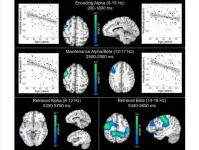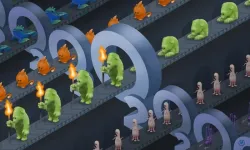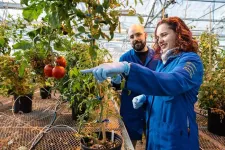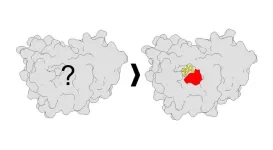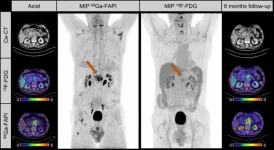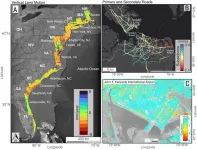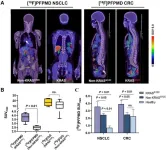(Press-News.org) A new artificial intelligence tool that interprets medical images with unprecedented clarity does so in a way that could allow time-strapped clinicians to dedicate their attention to critical aspects of disease diagnosis and image interpretation.
The tool, called iStar (Inferring Super-Resolution Tissue Architecture), was developed by researchers at the Perelman School of Medicine at the University of Pennsylvania, who believe they can help clinicians diagnose and better treat cancers that might otherwise go undetected. The imaging technique provides both highly detailed views of individual cells and a broader look of the full spectrum of how people’s genes operate, which would allow doctors and researchers to see cancer cells that might otherwise have been virtually invisible. This tool can be used to determine whether safe margins were achieved through cancer surgeries and automatically provide annotation for microscopic images, paving the way for molecular disease diagnosis at that level.
A paper on the method, led by Daiwei “David” Zhang, PhD, a research associate, and Mingyao Li, PhD, a professor of Biostatistics and Digital Pathology, was published today in Nature Biotechnology.
Li said that iStar has the ability to automatically detect critical anti-tumor immune formations called “tertiary lymphoid structures,” whose presence correlates with a patient’s likely survival and favorable response to immunotherapy, which is often given for cancer and requires high precision in patient selection. This means, Li said, that iStar could be a powerful tool for determining which patients would benefit most from immunotherapy.
The development of iStar was taken on as part of the field of spatial transcriptomics, a relatively new field used to map gene activities within the space of tissues. Li and her colleagues adapted a machine learning tool called the Hierarchical Vision Transformer and trained it on standard tissue images. It begins by breaking down images into different stages, starting small and looking for fine details, then moving up and “grasping broader tissue patterns,” according to Li. A network guided by the AI system within iStar uses the information from the Hierarchical Vision Transformer to then absorb all of that information and apply it to predict gene activities, often at near-single-cell resolution.
“The power of iStar stems from its advanced techniques, which mirror, in reverse, how a pathologist would study a tissue sample,” Li explained. “Just as a pathologist identifies broader regions and then zooms in on detailed cellular structures, iStar can capture the overarching tissue structures and also focus on the minutiae in a tissue image.”
To test the efficacy of the tool, Li and her colleagues evaluated iStar on many different types of cancer tissue, including breast, prostate, kidney, and colorectal cancers, mixed with healthy tissues. Within these tests, iStar was able to automatically detect tumor and cancer cells that were hard to identify just by eye. Clinicians in the future may be able to pick up and diagnose more hard-to-see or hard-to-identify cancers with iStar acting as a layer of support.
In addition to the clinical possibilities presented by the iStar technique, the tool moves extremely quickly compared to other, similar AI tools. For example, when set up with the breast cancer dataset the team used, iStar finished its analysis in just nine minutes. By contrast, the best competitor AI tool took more than 32 hours to come up with a similar analysis.
That means iStar was 213 times faster.
“The implication is that iStar can be applied to a large number of samples, which is critical in large-scale biomedical studies,” Li said. “Its speed is also important for its current extensions in 3D and biobank sample prediction. In the 3D context, a tissue block may involve hundreds to thousands of serially cut tissue slices. The speed of iStar makes it possible to reconstruct this huge amount of spatial data within a short period of time.”
And the same goes for biobanks, which store thousands, if not millions, of samples. This is where Li and her colleagues are next aiming their research and extension of iStar. They hope to help researchers gain better understandings of the microenvironments within tissues, which could provide more data for diagnostic and treatment purposes moving forward.
This research was funded by the National Institutes of Health (R01GM125301 and R01HG013185).
END
New AI tool brings precision pathology for cancer and beyond into quicker, sharper focus
2024-01-02
ELSE PRESS RELEASES FROM THIS DATE:
Age-related alterations in the oscillatory dynamics serving verbal working memory processing
2024-01-02
“[...] we discuss the implications of these novel findings on our understanding of how healthy aging affects verbal working memory processing.”
BUFFALO, NY- January 2, 2024 – A new research paper was published on the cover of Aging (listed by MEDLINE/PubMed as "Aging (Albany NY)" and "Aging-US" by Web of Science) Volume 15, Issue 24, entitled, “Age-related alterations in the oscillatory dynamics serving verbal working memory processing.”
Working memory (WM) is a foundational cognitive function involving the temporary storage of information. Unfortunately, WM ...
Is oxygen the cosmic key to alien technology?
2024-01-02
In the quest to understand the potential for life beyond Earth, researchers are widening their search to encompass not only biological markers, but also technological ones. While astrobiologists have long recognized the importance of oxygen for life as we know it, oxygen could also be a key to unlocking advanced technology on a planetary scale.
In a new study published in Nature Astronomy, Adam Frank, the Helen F. and Fred H. Gowen Professor of Physics and Astronomy at the University ...
How tomato plants use their roots to ration water during drought
2024-01-02
Plants have to be flexible to survive environmental changes, and the adaptive methods they deploy must often be as changeable as the shifts in climate and condition to which they adapt. To cope with drought, plant roots produce a water-repellent polymer called suberin that blocks water from flowing up towards the leaves, where it would quickly evaporate. Without suberin, the resulting water loss would be like leaving the tap running.
In some plants, suberin is produced by endodermal cells that line the vessels inside the roots. But in others, like tomatoes, suberin is produced in exodermal cells that sit just below ...
Targeted household cleaning can reduce toxic chemicals post-wildfire, Portland State research shows
2024-01-02
After the last embers of a campfire dim, the musky smell of smoke remains. Whiffs of that distinct smokey smell may serve as a pleasant reminder of the evening prior, but in the wake of a wildfire, that smell comes with ongoing health risks.
Wildfire smoke is certainly more pervasive than a small campfire, and the remnants can linger for days, weeks and months inside homes and businesses. New research from Portland State’s Elliott Gall, associate professor in Mechanical and Materials Engineering, examined how long harmful chemicals found in wildfire smoke can persist and the ...
New method illuminates druggable sites on proteins
2024-01-02
LA JOLLA, CA—Identifying new ways to target proteins involved in human diseases is a priority for many researchers around the world. However, discovering how to alter the function of these proteins can be difficult, especially in live cells. Now, scientists from Scripps Research have developed a new method to examine how proteins interact with drug-like small molecules in human cells—revealing critical information about how to potentially target them therapeutically.
The strategy, published in Nature Chemical Biology on January 2, 2024, uses a combination of chemistry and analytical techniques to reveal the specific places where proteins and small molecules bind ...
RSV vaccines would greatly reduce illness if implemented like flu shots
2024-01-02
Respiratory syncytial virus (RSV) vaccines recently approved for people 60 and older would dramatically reduce the disease’s significant burden of illness and death in the United States if they were widely adopted like annual influenza vaccines, a new study has found.
A high level of RSV vaccination would not only potentially reduce millions of dollars in annual outpatient and hospitalization costs but would also produce an economy of scale with individual shots being delivered at a relatively modest cost of between $117 and $245 per dose, the study said.
The vaccines are currently covered by most private insurers without ...
Ga-68 FAPI PET improves detection and staging of pancreatic cancer
2024-01-02
Reston, VA—PET imaging with 68Ga-FAPI can more effectively detect and stage pancreatic cancer as compared with 18F-FDG imaging or contrast-enhanced CT, according to new research published in the December issue of The Journal of Nuclear Medicine. In a head-to-head study, 68Ga-FAPI detected more pancreatic tumors on a per-lesion, per-patient, or per-region basis and led to major and minor changes to clinical management of patients. In addition to enhancing precise detection of pancreatic cancer, 68Ga-FAPI ...
Understanding climate mobilities: New study examines perspectives from South Florida practitioners
2024-01-02
Understanding Climate Mobilities: New study examines perspectives from South Florida practitioners
As climate change continues to impact people across South Florida, the need for adaptive responses becomes increasingly important.
A recent study led by researchers at the University of Miami Rosenstiel School of Marine, Atmospheric, and Earth Science, assessed the perspectives of 76 diverse South Florida climate adaptation professionals. The study titled, “Practitioner perspectives on climate mobilities in South Florida” was published in the December issue of the Journal Oxford Open Climate Change, and explores the expectations and concerns of practitioners from the ...
Study: From NYC to DC and beyond, cities on the East Coast are sinking
2024-01-02
Major cities on the U.S. Atlantic coast are sinking, in some cases as much as 5 millimeters per year – a decline at the ocean’s edge that well outpaces global sea level rise, confirms new research from Virginia Tech and the U.S. Geological Survey.
Particularly hard hit population centers such as New York City and Long Island, Baltimore, and Virginia Beach and Norfolk are seeing areas of rapid “subsidence,” or sinking land, alongside more slowly sinking or relatively stable ground, increasing the risk to roadways, runways, building foundations, rail ...
New PET tracer noninvasively identifies cancer gene mutation, allows for more precise diagnosis and therapy
2024-01-02
Reston, VA—A novel PET imaging tracer has been proven to safely and effectively detect a common cancer gene mutation that is an important molecular marker for tumor-targeted therapy. By identifying this mutation early, physicians can tailor treatment plans for patients to achieve the best results. This research was published in the December issue of The Journal of Nuclear Medicine.
Kirsten rat sarcoma (KRAS) is a commonly mutated oncogene that is present in approximately 20-70 percent of cancer cases. Patients with KRAS mutations usually respond poorly to standard therapies. As such, the National Comprehensive ...
